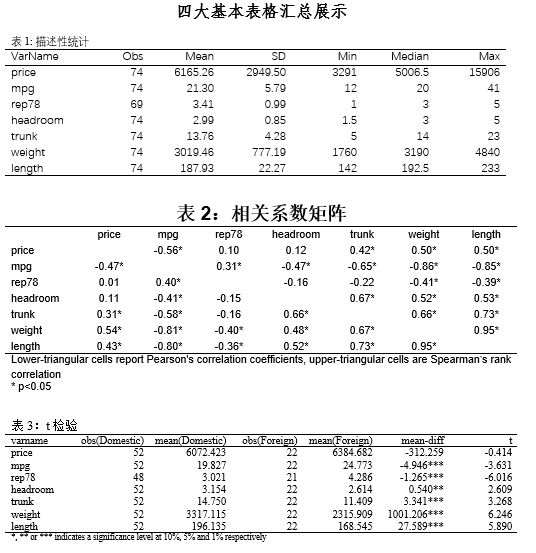- Stata (as of version 15) has two different Markdown specifications built into it's markdown command (and therefore, also into dyndoc and dyntext). The default specification is flexmark, and you also have the option (currently undocumented) to use pegdown. These differ slightly from each other, meaning the same Markdown document might come out.
- Stata(拡張)を使った崇高なテキスト3 - すべてのコマンドに対してStataの新しいインスタンスを開く - sublimetext3、stata. rstudio、stata、r-markdown.
- Learn how to embed Stata output in text files, HTML files, and Word documents. We show you how to use dynamic tags to create reproducible reports, and how to.
Stata's commands for creating reports come in two varieties: Dynamic document commands; These commands create text files, HTML files, and Word documents that incorporate the full output from Stata commands. You can use the Markdown text-formatting language to customize the look of your report. In this update, we provide the snippests and syntax highlighting for users to code the Stata markdown script efficiently (Many thanks for PJ Paul's.
10.1 Introduction
For some Stata documentation, you may want to include portions of Stata's help files.
When I present workshops on Stata programming topics, I often refer to the Help files. I use them constantly myself, and I usually want my audience to learn to do the same.
I can usually just write 'look up command name' or provide a URL. But every once in a while, I want to include something from a Help file in my own writing. Sometimes I want to make a point about how the Help itself is laid out.
10.2 Example - help graph
For example, I recently found myself wanting to discuss some of the many tasks accomplished with Stata's graph command, and it is useful to look at how Stata has grouped these in its own documentation. In Stata, type the command:
What you will see in the Help (below) is that the first group of graph commands draw graphs, that is, they specify how the ink is to go on the page (pixels on the screen), and then carry out that task.
The other graph commands, grouped further down, are utility procedures that mostly manipulate a graph that has been produced. (I have only included part of the Help page here.)
10.3 The R Markdown
There are three steps to this little display:
- a fake call to
help graph. This is faked because it is a command Stata would ignore in batch mode. - a hidden
translatecommand (in Stata). This converts Stata's marked up (SMCL) help into plain text. - a hidden
readLinescommand (in R). This gives us our 'output' in the document.
To see the details, see the source.
(This page was written using Statamarkdown version 0.5.5.)
October 2019
- Recentering, Rescaling, Standardizing Coefficients
- Stata, Markdown, and Dynamic Documents
- Stata Graphics
- Stata Graph Detail
[Workshops index]
Download the following packages to your own ado location (type net query in the command box to see where this is).
From within Stata, use
and follow the links.
Post-estimation ado
stdParm.ado by post-estimation transformation
stdParm.sthlp help file

Some math for post-estimation centering and standardizing with notes
On the equality of variable-wise and term-wise recentering.
Re-estimation ado
From within Stata, type
and follow the links.
- stdBeta.ado by transforming the data
- stdBeta.sthlp help file
Beginning with Stata 15, you can write dynamic documents using Markdown, wholly within Stata. As of Stata 16, you can produce HTML, PDF, or Word documents this way.
For older versions of Stata you can write dynamic documents which include Stata code and output from the R or Rstudio interface.
In the following material, I try to explain some of your options, including some utility programs which ease the process of going from dynamic Markdown to final document.
Easy Stata Markdown: the stmd command
This command is intended to make dynamic Markdown documents easy to write, in the style of most other programming languages.
The rest is Markdown.
Stata's Dynamic Document Infrastructure
Official Stata includes a Markdown interpreter and commands to execute dynamic documents. Dig into the details to go beyond stmd.
Stata and R Markdown: the Statamarkdown package
Stata Graph Concepts
Stata Markdown Tutorial
Reconstructing Graphs - Tour by Example
Stata Markdown
Stata Graph Detail
Coordinates
Postfile problems
